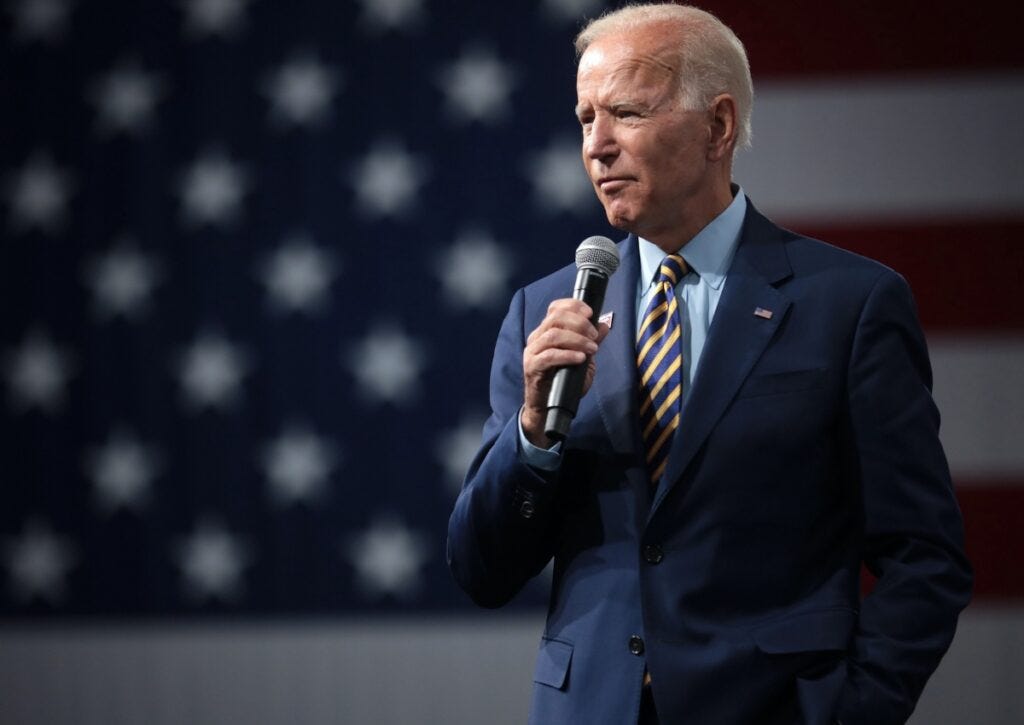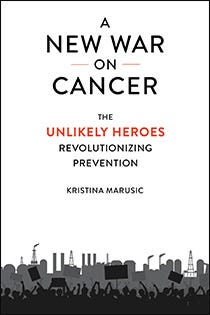In President Biden’s state of the union address Tuesday night, he pledged his devotion to a fierce “fight against cancer,” invoking a heart-tugging story of baby “Ava,” who started her battle with kidney cancer at the age of 1.
Biden spoke of a reignited “Cancer Moonshot” search for a cure for cancers that are impacting far too many lives, and of measures to cut healthcare costs to make treating cancer more affordable. He outlined an ambitious goal to cut cancer death rates by at least 50% in the next 25 years, and to “turn more cancers from death sentences to treatable diseases, provide more support for patients and their families.”
But nowhere in his lengthy prime-time address did Biden speak of working to rein in the vast, virtually unchecked, flood of environmental chemical contaminants that scientists say cause cancer.
A new book scheduled for release in May written by journalist Kristina Marusic lays out in stark terms how already-staggeringly highly rates of cancer are sure to continue to climb if we don’t slash our exposure to the chemicals known to cause cancer.
The harsh statistics are detailed by Phil Landrigan, director of the Program for Global Public Health and the Common Good at Boston College, in the introduction to Marusic’s A New War on Cancer: The Unlikely Heroes Revolutionizing Prevention.
Landrigan writes: “From 1975 to to 2019, the number of new cancer cases per 100,000 Americans—the incidence rate—increased for multiple cancers. Incidence of multiple myeloma rose by 46%, incidence of non-Hodgkin lymphoma by 76%, and incidence of testicular cancer by 70%. In the same years, incidence of childhood leukemia increased by 35% and incidence of childhood brain cancer by 33%. These increases are far too rapid to be of genetic origin. They cannot be explained by better diagnosis.”
“The explanation for the increasing incidence of cancer lies in our world of chemicals. Since the dawn of the chemical era in the early twentieth century, more than 300,000 new chemicals have been invented. These are novel materials that never before existed on Earth. Many are made from oil and natural gas. They are manufactured in enormous quantities, and global production is on track to double by 2030.
Chemical pollution has become so widespread and complex that in 2022, an expert body at the Stockholm Environmental Institute concluded that chemical pollution now exceeds our ability to monitor and contain it and thus threatens the sustainability of human societies.
The World Health Organization has determined that more than 100 manufactured chemicals can cause cancer in humans.”
The fact that many widely used chemicals cause cancer - not to mention a range of other human health problems - is no surprise to me, nor to many of you.
But for Biden and most of our elected leaders, these facts are clearly too politically uncomfortable to address, or even acknowledge.
US Sen. Cory Booker recently reintroduced a bill aimed at banning some of the most clearly dangerous pesticides used in our country - chemicals already banned in the European Union. But even Booker and his staff admit they have no hope the measure will become law anytime soon. As Booker’s counsel Adam Zipkin told me, Booker has laid out a “wish list” for the future but is not wasting time pushing big reforms he knows have “no realistic chance” in overcoming opposition from the powerful chemical industry and the lack of political will in Washington to challenge the industry.
Meanwhile, the suffering goes on. Within the last two weeks alone, dear friends of mine lost their partners to brutal battles with cancers that took them through years of painful treatments and dashed hopes for recovery. Both suffered from cancers that scientific research has associated with chemical exposures found in the industries in which they worked.
It’s so common now, to have cancer.
Marusic details the human toll in her upcoming book:
Half of all American men and one in three women can expect to get some type of cancer diagnosis in their lifetimes.
One in every 285 American children receives a cancer diagnosis before the age of 20, with cancer rates for children increasing steadily over the last 50 years.
Rates of childhood leukemia have increased by 35%, and rates of childhood brain cancer have gone up by 33% since the early 1970s.
A presidential panel determined years ago that up to two-thirds of all cancer cases are linked to preventable environmental exposures.
Biden’s upbeat public address glossed over those ugly truths, focusing instead on feel-good rhetoric: “For the lives we can save… and the lives we have lost, let this be a truly American moment that rallies the country and the world together and prove that we can still do big things. Let's end cancer as we know it and cure some cancers once and for all.”
Efforts to find a cure are necessary, of course. The same is true for moves to cut drug costs. But without a serious effort at prevention that includes putting public health over the corporate profits of chemical companies, reducing exposures to cancer-causing chemicals, we ensure the suffering and pain and loss of precious lives continues.
As Landrigan points out in the book’s introduction, most of the manufactured chemicals that are known to be human carcinogens are still sold today in the United States, with a mere five hazardous chemicals removed from US markets in the past 50 years. “Chemical policy in this country is broken,” he writes.
This is a book Biden really needs to read.






It is a highly profitable cycle isn't it? Make people sick for profit and then sell them drugs and treatments for profit. The American way.
been following 2 giant corporations responsible for the worst (not monsanto)
They have access to the states and regulatory bodies here in Norway, their activities defy belief and still it goes on.
The papers rumble about it now and again.
Fortunately there are now a few cracks appearing - but why does it take a few dedicated individuals.
The cost to society of these illnesses are not borne by the companies involved but by you and me and our states.
Why when the evidence is clear?